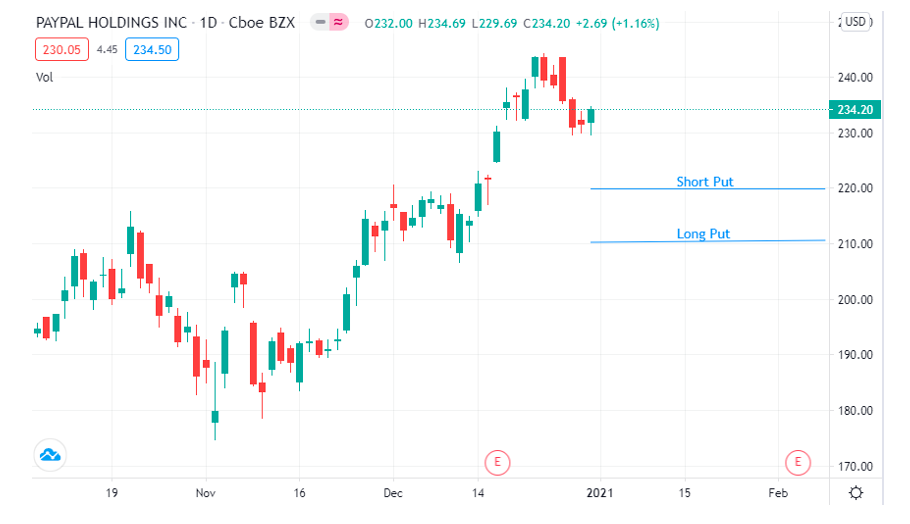PayPal (PYPL) stock was one of the strongest performers of 2020 with the stock rising from 107.97 to 234.20 for a gain of 116.91%.
After breaking out once again in December, the stock is experiencing a pullback towards the 21-day moving average.
I like trading bull put spreads on strong stock such as PayPal.
A bull put spread is a defined risk option strategy that profits if the stock closes above the short strike at expiry.
To execute a bull put spread an investor would sell an out-of-the-money put and then buy a further out-of-the-money put.

Traders who think PayPal stock (PYPL) will not drop below 220, could look to sell a February 19th 220 put and buy a February 19th 210 put.
On Friday, this spread was trading for around $3.45 which means a trader selling this spread would receive $345 in option premium and would have a maximum risk of $655.
That represents a 52.67% return on risk between now and February 19th as long as PYPL stock remains above 220.
If PYPL’s stock price closes below 210 on the expiration date the trade loses the full $655.
The breakeven point for the bull put spread is 216.55 which is calculated as 220 less the 3.45 option premium per contract.
If PYPL’s stock price drops below 220, I would close the trade early for a loss.
PayPal’s earnings report is set for February 1st, so this trade would have earnings risk.
Below you can find a video showing a previous example of a bull put spread on PYPL from November expiration. This trade came under a little it of pressure initially, but we were able to adjust the trade and come out as a winner.
This article is for education purposes only and not a trade recommendation. Remember to always do your own due diligence and consult your financial advisor before making any investment decisions.
Twitter: @OptiontradinIQ
The author may have a position in mentioned securities at the time of publication. Any opinions expressed herein are solely those of the author, and do not in any way represent the views or opinions of any other person or entity.








